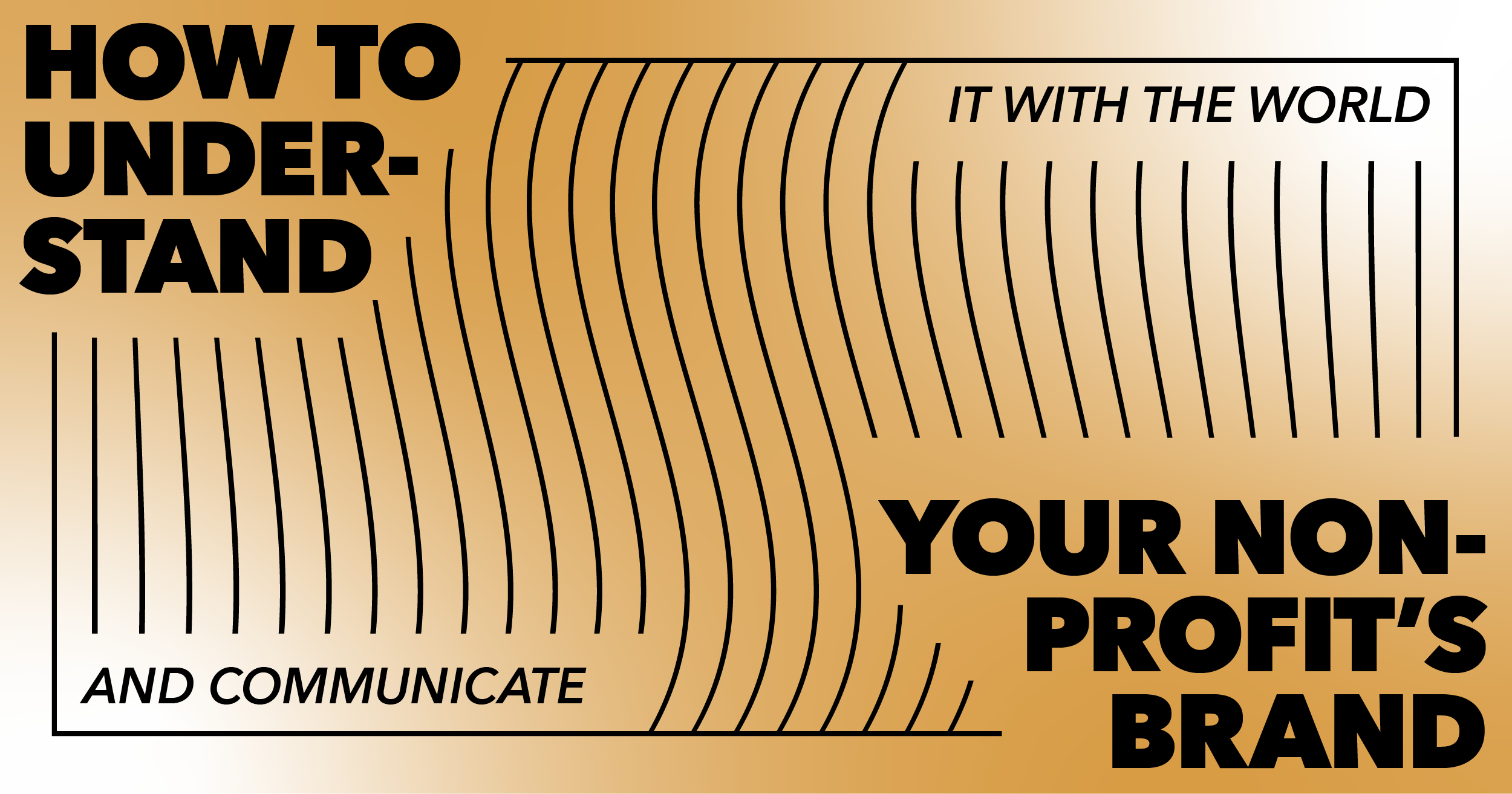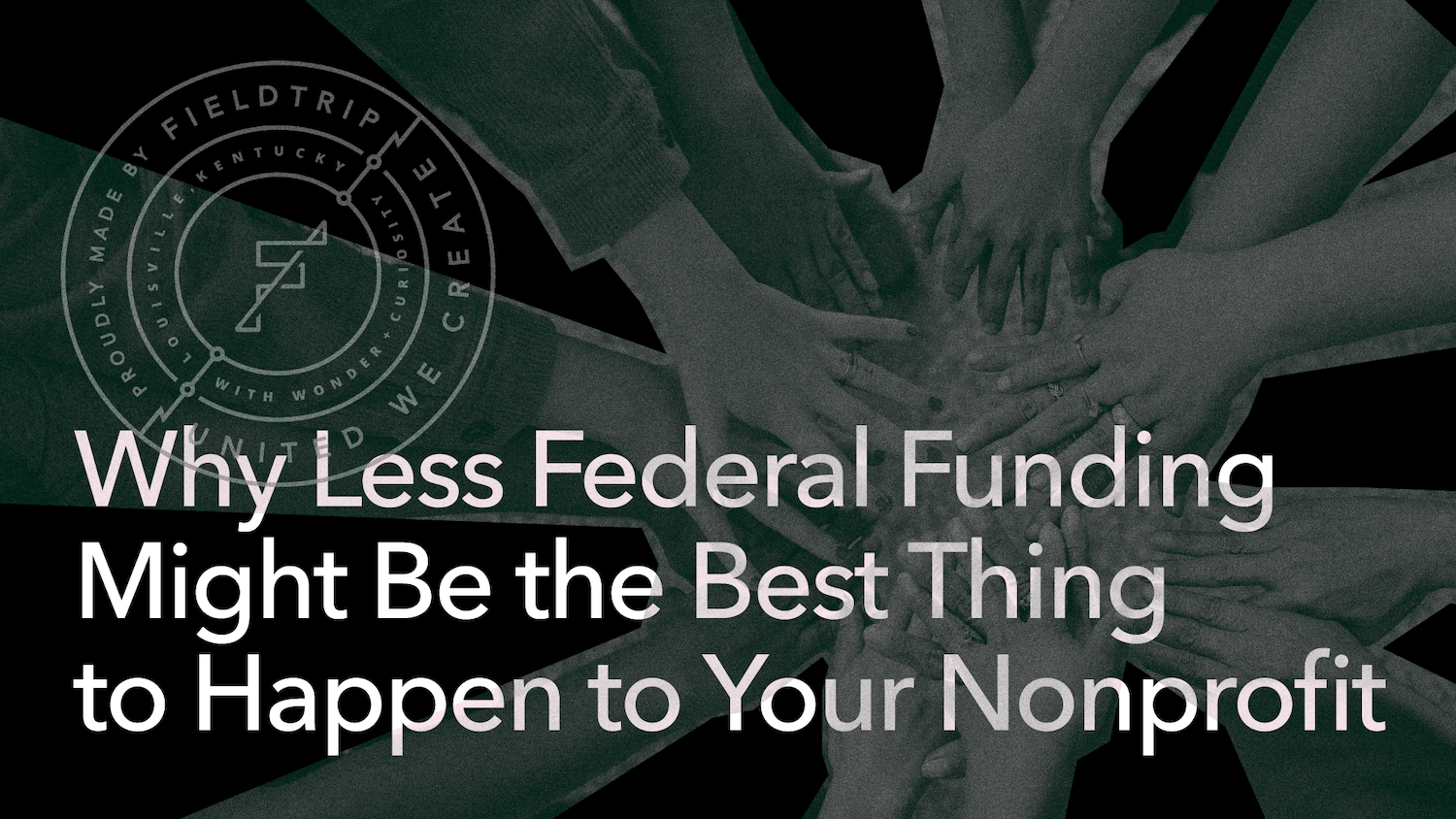
As nonprofit leaders, when we think about the stories we need to tell, we often think of our organization as the story’s hero. To make a Star Wars analogy, we probably assume we’re Luke Skywalker. In reality — we’re the Yodas and the Obi-Wans. We’re the characters that lead people from where they are today to a much stronger position.
For today’s blog post, I’m going to talk about nonprofit branding and how it’s essential to understand your brand and communicate it with the world. I recently joined Gregory Nielsen of the Nonprofit Vision podcast, and we talked a lot about a nonprofit’s essence and why branding is so important (click here to give it a listen). And it all boils down to this: It’s about expanding, investing, and building the capacity of the mission and the work.
Focus on One Audience
On Fieldtrip’s website, you’ll see our rocket icon everywhere. But I don’t aim to be the rocket ship. I aim to be the fuel. For our clients, I get to go along for the ride and fuel the great work they’ve already created. The beneficiary is always the hero of the story. And the more we focus on them, the more other people we’re trying to convince have faith that we can provide the solution.
Instead of casting a wide net with your marketing that includes eight different audiences, think about the one audience you need to impact. Then think about the problem you’re trying to solve.
If you’re a nonprofit that needs a new website, go back a few steps and ask yourself how you know that. It could be that it’s outdated or needs new functionalities. And that may indeed be true. But what other elements aren’t being addressed? You don’t need all the answers; you just need the curiosity to understand.
Getting Your Audience On Board
Communicating nonprofit branding should go through a funnel. Simply put, people need to know about you and what you do (awareness) to understand your mission and have confidence that you’ll succeed at what you’re setting out to do (alignment), so much so that they’ll want to get involved creating a solution (advocacy).
If you think about getting your audience on board, most people think they need to spend the most time on awareness. But what I think you need to focus on and tackle first are the people who are aware of you but aren’t advocating for you. Creating a new website would live in that alignment layer. Advertising and PR would be in the awareness layer. What we’re talking about with advocacy is the branding piece of it.
That doesn’t mean you need a new brand, but you may need a more clearly defined brand. Or something that’s more visualized. Or a stronger story. Or new assets to tell your story. You need to give people the tools to be your advocate. Once you identify that gap, then you can build your website.
Communicating Your Nonprofit’s Brand
Branding is more than just explaining what you do. It’s about convincing others they should care and be passionate about joining you in that struggle.
Some boards of directors may have come up from the path of being a beneficiary first (i.e., they are the ones who were helped). But for each member who hasn’t been in that position, do they know how the issue at hand (lack of affordable housing, for example) impacts their world? Have they thought about the impact’s ripple effect and how it improves their world?
This branding exercise aims to understand your audience, how they want to be communicated with, and where that communication should take place. When you think about your communication tools, like your website, you need to make it a tool for the people you want to help.
The one exception is if you’re undergoing a capital campaign and fundraising. Then you want to relate the audience to the benefit and be able to share how their world will be better by solving this social issue. The fact is, most people lead with donor messages in their nonprofit branding communications. When you focus on the beneficiary as the story’s hero, those audiences are drawn to it like a magnet. They believe in you and support you more readily. You aren’t explaining. You’re inspiring people to solve this issue. And great things happen when you make that change.
Closing Thoughts
If there’s one final thing you need to think about to understand your nonprofit’s brand and share it with the world, ask yourself this: Can you define your brand’s essence? Meaning how do you inspire your audience in three words? It should be emotional, bold, and impactful. We tend to be too humble or think being the best-kept secret is a badge of honor. But those are outdated philosophies. Getting crystal clear on your brand, understanding your audience and your messaging, and knowing what you want your audience to do with that message is paramount.
Learn more about nonprofit marketing through our Mission Multiplier video series –https://wearefieldtrip.com/journal/ . If there’s further questions, feel free to schedule a meeting with me –https://calendly.com/janewp

